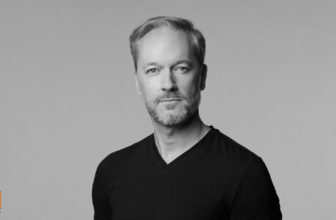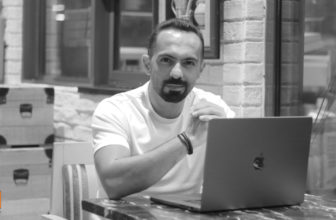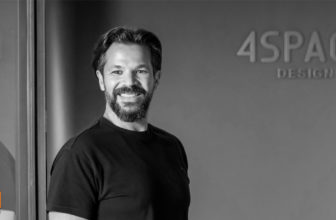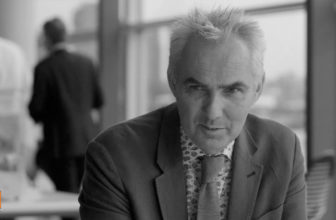Born in Bangkok, Thailand, Kulapat Yantrasast graduated with honors from Chulalongkorn University (1990). Kulapat received both his M.Arch. and Ph.D. degrees in Architecture from the University of Tokyo (1993/1996), under a Japanese Government scholarship. Upon graduating, Kulapat worked as Tadao Ando’s close associate for eight years in Japan. In 2012, he was named one of the art world’s 100 Most Powerful People; in 2009, Kulapat was the first architect to receive the Silpathorn Award for Design from Thailand’s Ministry of Culture. He is a frequent public speaker at leading institutions and has served on the Artists’ Committee of the Americans for the Arts (the United States’ oldest organization for support of the arts in the society) since 2005. In 2015, he was appointed a board member of the Pulitzer Foundation for the Arts, and he is an active member of the Design Council for Collective Design. In an interview conducted by Alex Wong, Kulapat of wHY Architecture talks food metaphors and upbringings.
“I think food and architecture share many meanings and relations with people and culture. They are both so essentials and so close to people; starting from ingredients and how ideas transform ingredients into art forms to nourish and inspire people” Kulapat told Arch2O
AW: How has your ethnic and cultural background influenced your design philosophy? Do you identify yourself as Asian, Asian American, or American?
KY: That is a good question, I think I have Asian roots but see myself as a rootless global nomad. My background in
Thailand and
Japan surely play a crucial party of my thinking and making, but I also love cultures from all continents and also nature from all around; so they all form this wonderful encyclopedic archive that seems to come out in my work on different occasions or triggers.
AW: How have your education and work experiences influenced your design philosophy? What do you feel is a strength that you bring from Asia to the states?
KY: I think there are different perceptions of place and time seen in traditional Asian architecture and philosophy that influence my formation as an architect; and I think with my work, these ways of thinking and making spaces and forms are my strength as a designer in the world. The Japanese concept of ‘ma’ as a comprehensive definition of ‘space’ is truly an important notion for me.
AW: Would you kindly elaborate on your philosophy around food metaphors and provide some examples to illustrate that?
KY: I think food and architecture share many meanings and relations with people and culture. They are both so essentials and so close to people; starting from ingredients and how ideas transform ingredients into art forms to nourish and inspire people. As an architect, I am envious of the close relationship that food/chefs have with society and people, while architecture seems to have grown more distant and less personal for people today.
I talk a lot about Thai food and Japanese food as metaphors for their respective architecture. Japanese food perhaps reflects Japanese cultural preferences of abstraction, refinement, and strength of depth, clarity of one strong thought. Thai food is almost the opposite; its strength might come from the unique way to combine and integrate diverse ingredients and tastes into one and allowing all of them to come out at same time, salty, sweet, spicy et al. In that sense, I feel Modern Architecture seems like a Japanese food mode of thinking – abstract, refined and clear. But as the world is getting complex, diverse and polarized, I am also seeing that architecture might need to be moving from the Japanese food mode of minimal abstract refinement into the Thai food mode of inclusive – mashup integrated whole; unity through diversity at its prime.
AW: Why have you decided to set up an office in California? What do you feel is most attractive to you in California? How has the Californian environment influenced your design philosophy? Why do you choose to set up an office in the States as opposed to Thailand or Japan? What do you feel are the main challenges of running an office in the States?
KY: Then, Having lived in Thailand for 20 and then Japan for 15 years, I felt I need a place I could grow that allows me to be truly universal yet in touch and in action with my roots. I felt the US is still the place for the opportunity where anyone willing to work hard still has a chance to fulfill. I felt
Los Angeles has an amazing sense of freedom, the place allows you to define who you are, there is a good sense of curiosity and openness I didn’t find anyplace else. And definitely, the integration of indoor and outdoor spaces and the environment is truly inspirational to me. You truly feel connected to nature – both in terms of plants and animals onto the mountains and the ocean and the abstract nature of light, wind, and spirit of a place. I think California has so much spirit, old and new, that is so inspiring for creative types.
The main challenges of running offices in the US, we have both
NY and LA, would be how large and how diverse and how polarized this country is. But if you could overcome and create something unique in this complex country, I think you are ready for the world! As they’d say, if you can make it there, you can make it anywhere!
AW: You are known for the art museums you have built. How do you mediate between art and architecture? What are the inspirations you take from looking at art and working with artists in California?
KY: I think good artists are the explorers of our times; they venture into nature, specific aspects of society and unveil worlds or visions that encourage us to contemplate realities in very different ways. As museum architect – designer, I truly see my job as that of a matchmaker who connects 2 good friends together – one the artist, the other being the people. I hope to provide an uplifting, comfortable and confident environment in which people feel happy to encounter the art and vice versa. The sterile white box notion is obsolete in this thinking.
Learning and working with artists in LA and California has been so important to my life and work; their relationships to nature and culture whether the light and space, the ocean and the surf culture, the desert and the desert lives; all unique aspects of California could be seen as reflected within our artists’ expressions. Very inspiring to me.
AW: Would you talk about the Edinburgh Scotland landscape competition? What do you think are the strengths of your design over the other teams’ that ultimately won you the commission? What are the main takeaways of winning or losing an architecture competition?
KY: For the Ross Pavilion and West Princes Street Gardens competition that we won, looking back, I think our proposal stood out with its true integration of architectural landmark together with urban acupuncture strategies. The design is not about a beauty pageant at all, more about a healing solution that connects the old and new city together through circulation and flow, yet also create a landmark, not as an object, but as a central place where people could enjoy nature, the castle and the performing arts.
Design competitions are also complex processes, largely due to the jury and the agenda of the project. It is important to have open competitions as the public could also learn from that process and engage in conversations of architecture and the city; nowadays we simply do not have enough conversations about architecture and cities, there are eye candies online but no dialogues and dialectical discussion on architecture. Competitions could help to increase that.
AW: Would you like to talk about the Pomona College project? How has your knowledge of Asia informed the concept of “urban acupuncture?”
KY: The Pomona College’s Studio Art Hall’s idea is to create a real open indoor-outdoor village for multi-disciplinary art making; a simple timeless way of gathering of artistic minds but looking forward to technologies and new future collaborated art forms. It serves as the creative hub for the entire campus beyond art students.
I think architecture acupuncture is influenced by my way of looking at health and longevity from my Asian upbringing. Architecture acupuncture starts with the belief that there is life in everything – city, building, institutions, museums; and the architects’ intervention aim to define, strengthen and sustain that life further using planning, renovation, problem-solving and expansion as tools.
AW: In your upcoming EPA Center of Art, what do you feel is the challenge of working with so many members of the community, and how has the process benefited the design?
KY: I truly see architecture as practiced in the 21st century as an orchestra of ideas and people, rather than a diva – prima Donna solo performance seen in previous ages. In that sense, architects function as conductors who need to bring out the best in the selected team in the orchestra through a concerted effort towards a set of common goals. The EPA Center Arts is a perfect example of designing with/ for the communities; the design process is long, open and interactive. Of course, there are more communication works needed to get a group of people to understand the context and the problems and goals of the project. But the end result is truly worthy and rewarding as a true civic process of environmental design.





